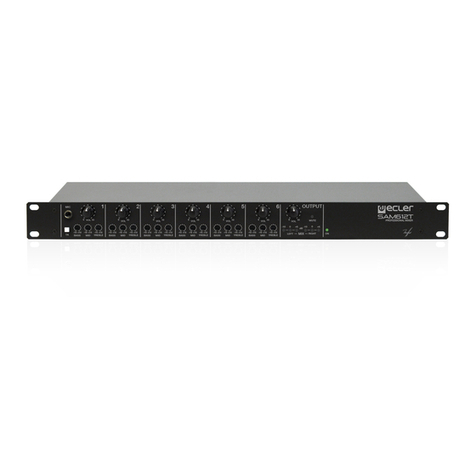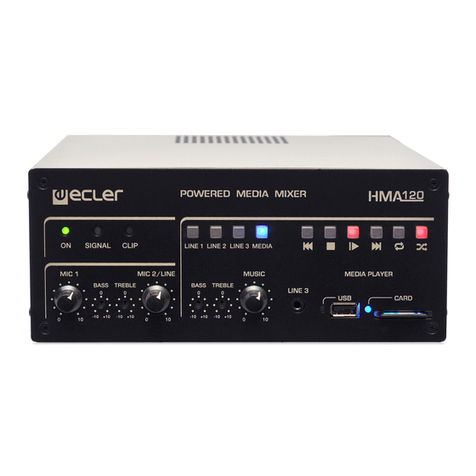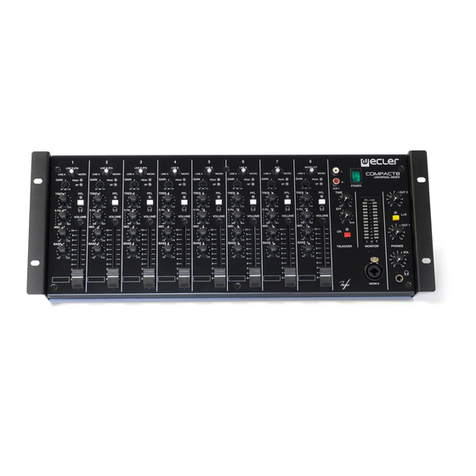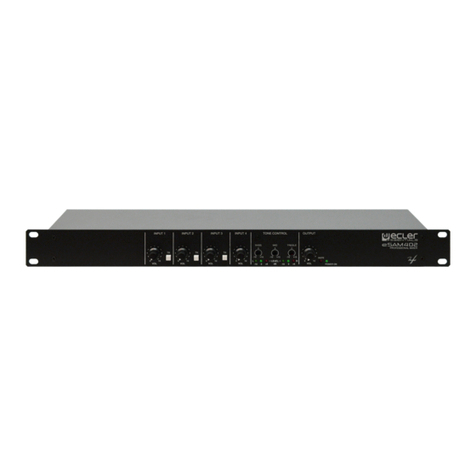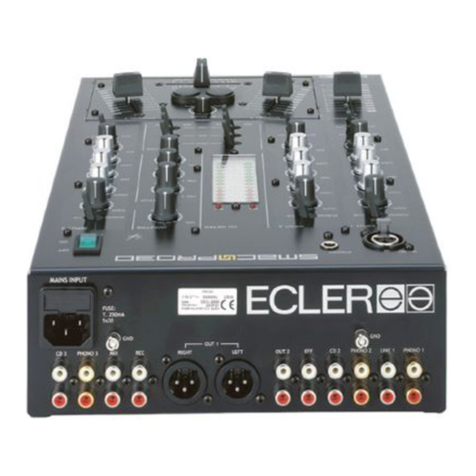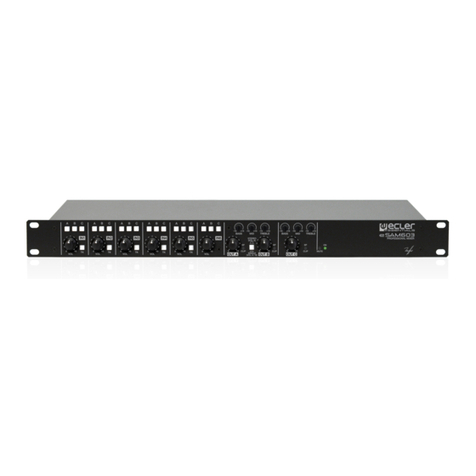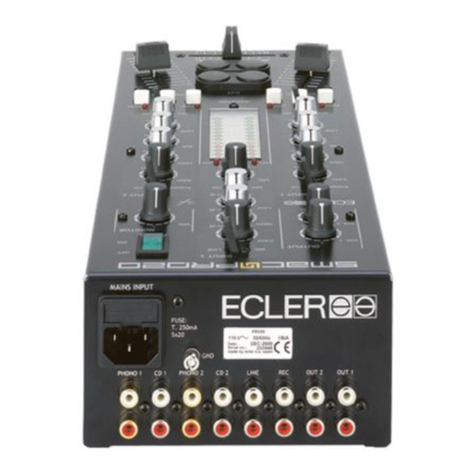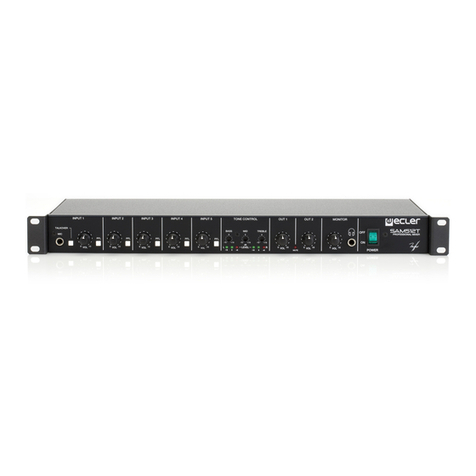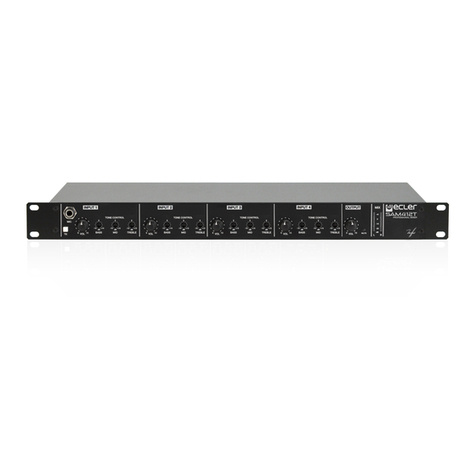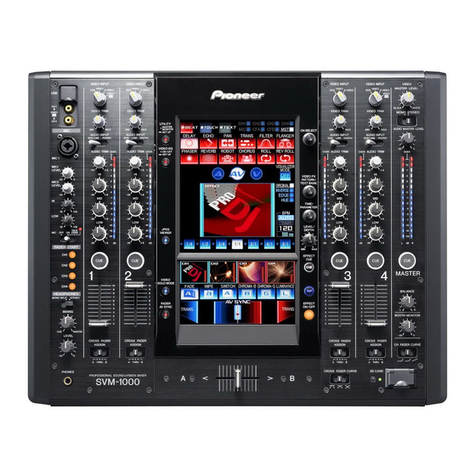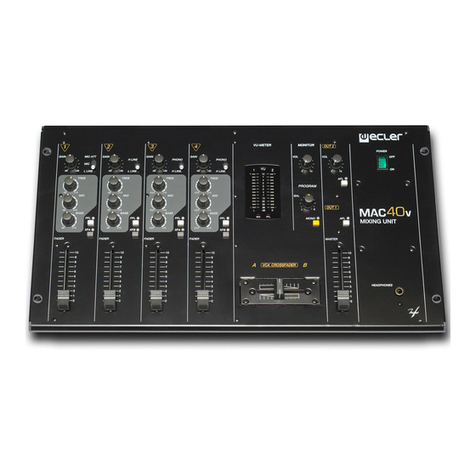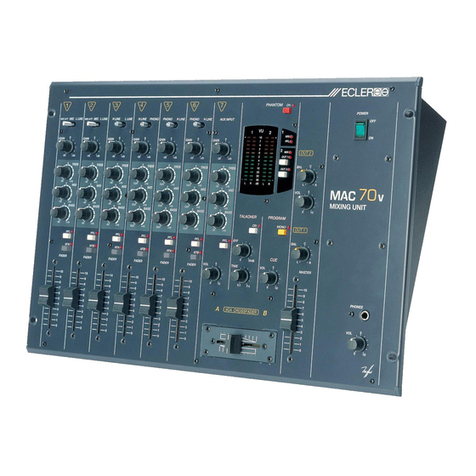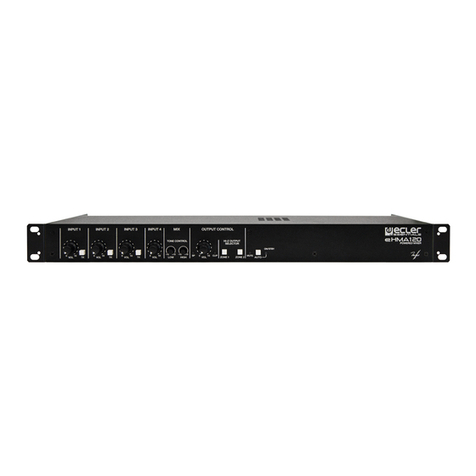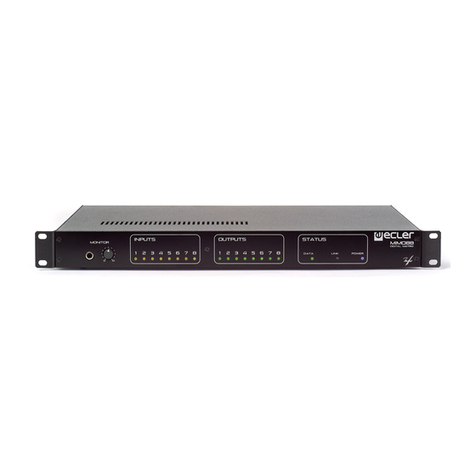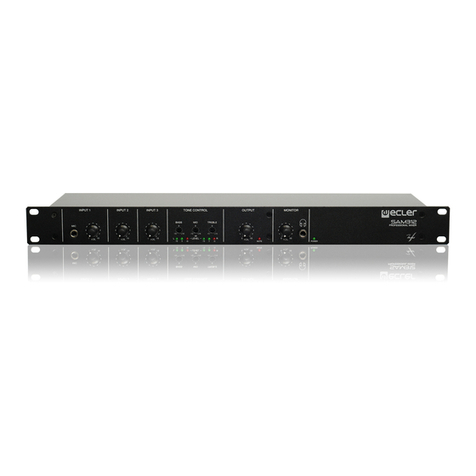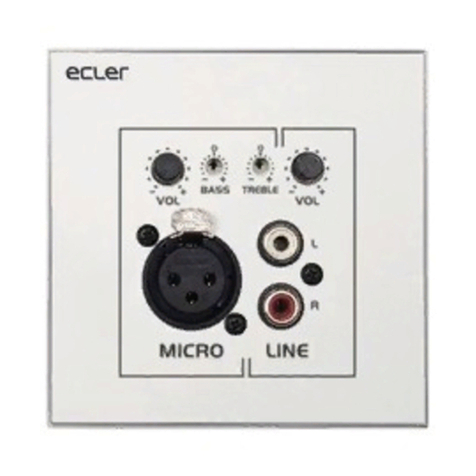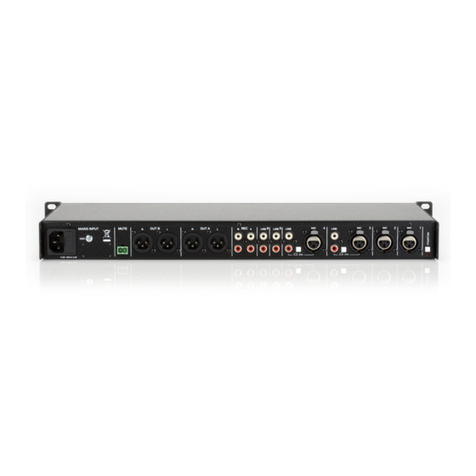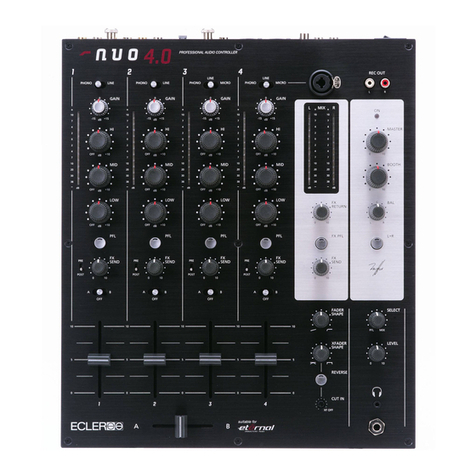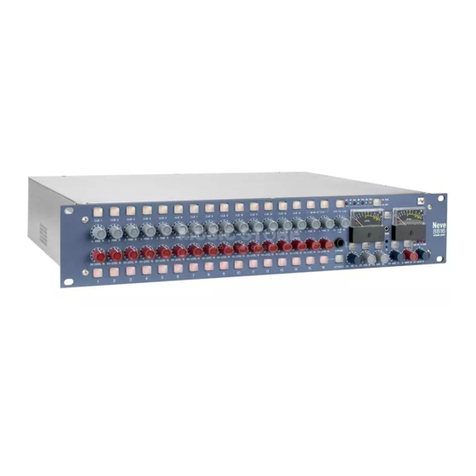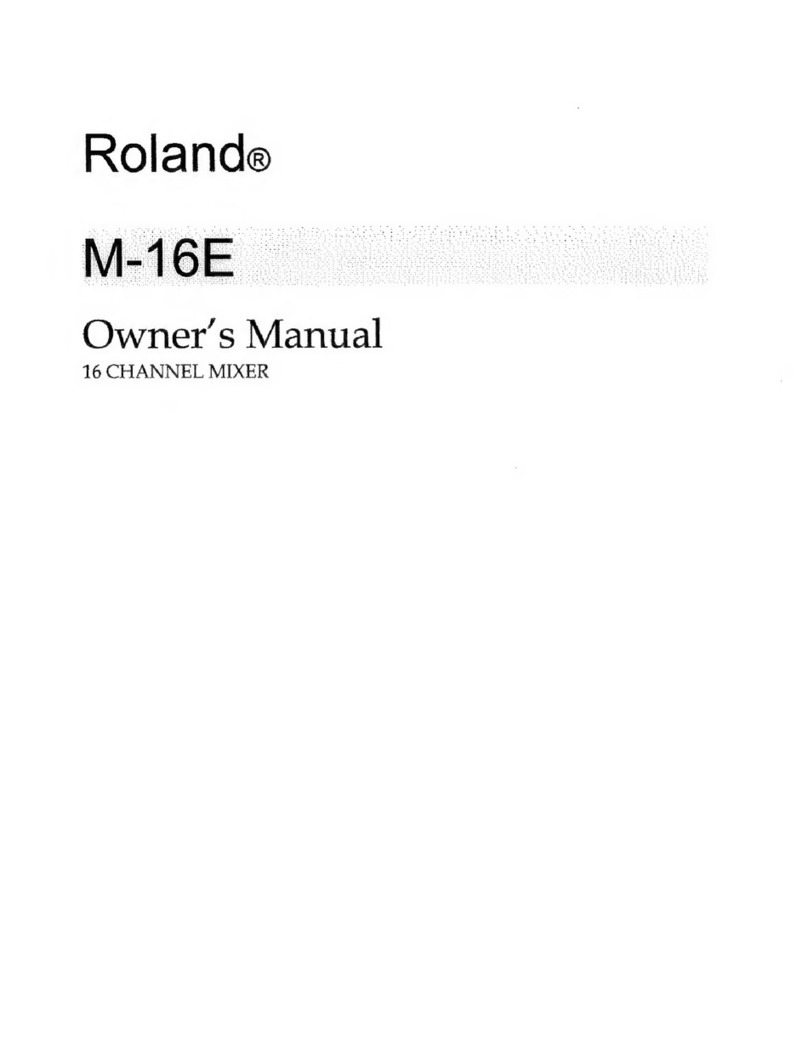9
OUTPUT encoders and indicators
These four controls, one for each of the outputs (ZONE A, B, C or D), allow you to:
Short press: select an output zone to be displayed on the LCD. Successive presses of the
same output control alternate the display between two options:
oOutput volume: zone indication, ZA, ZB, ZC, ZD + horizontal bar graph indicating
the output volume In this screen, turning the encoder adjusts the output volume of
the displayed zone.
oMIXER Mode: displays the mix levels of all the inputs for the displayed zone. In
this screen, turning the input encoders allows to adjust the mix level of each input
for the displayed zone.
Long press (> 2 seconds): enable/disable the MUTE feature of an output. The output LED
indicator shows the status of its MUTE function (lit red = MUTE ON). You can press
multiple keys simultaneously to enable/disable their MUTE function
Additionally, when an input, output or global parameters editing/setup screen is displayed, any of
the four output encoders allow you to modify the value of the parameters currently displayed on the LCD,
increasing or decreasing the value depending on the direction of rotation.
NOTES:
The A&B and/or C&D keys are linked if you select the stereo mode for any pair of outputs:
they simultaneously light up and off when enabling/disabling their MUTE mode or setting
the VOLUME, indicating that this is a stereo pair in which both will receive the same
processing for level, EQ, etc.
The DAM614 automatically manages the routing of mono or stereo inputs to mono or
stereo outputs:
oA mono input is directly sent to a mono output, with its corresponding adjustment
of send or mixing level, which is independent of the levels for the other inputs or
outputs
oA mono input is duplicated to be sent to the left and right channels of a stereo
output, with its corresponding adjustment of send or mixing level, which is
independent of the levels for the other inputs or outputs
oA stereo input is sent to a mono output as a mono sum of its left and right channels
(stereo-to-mono conversion), with its corresponding adjustment of send or mixing
level, which is independent of the levels for the other inputs or outputs
oA stereo input is sent to a stereo output, respecting the stereo image between the
two: the left channel of the input will be sent to the left channel (odd) of the output,
while the right channel of the input will be sent to the right channel (even) of the
output, with its corresponding adjustment of send or mixing level, which is
independent of the levels for the other inputs or outputs
